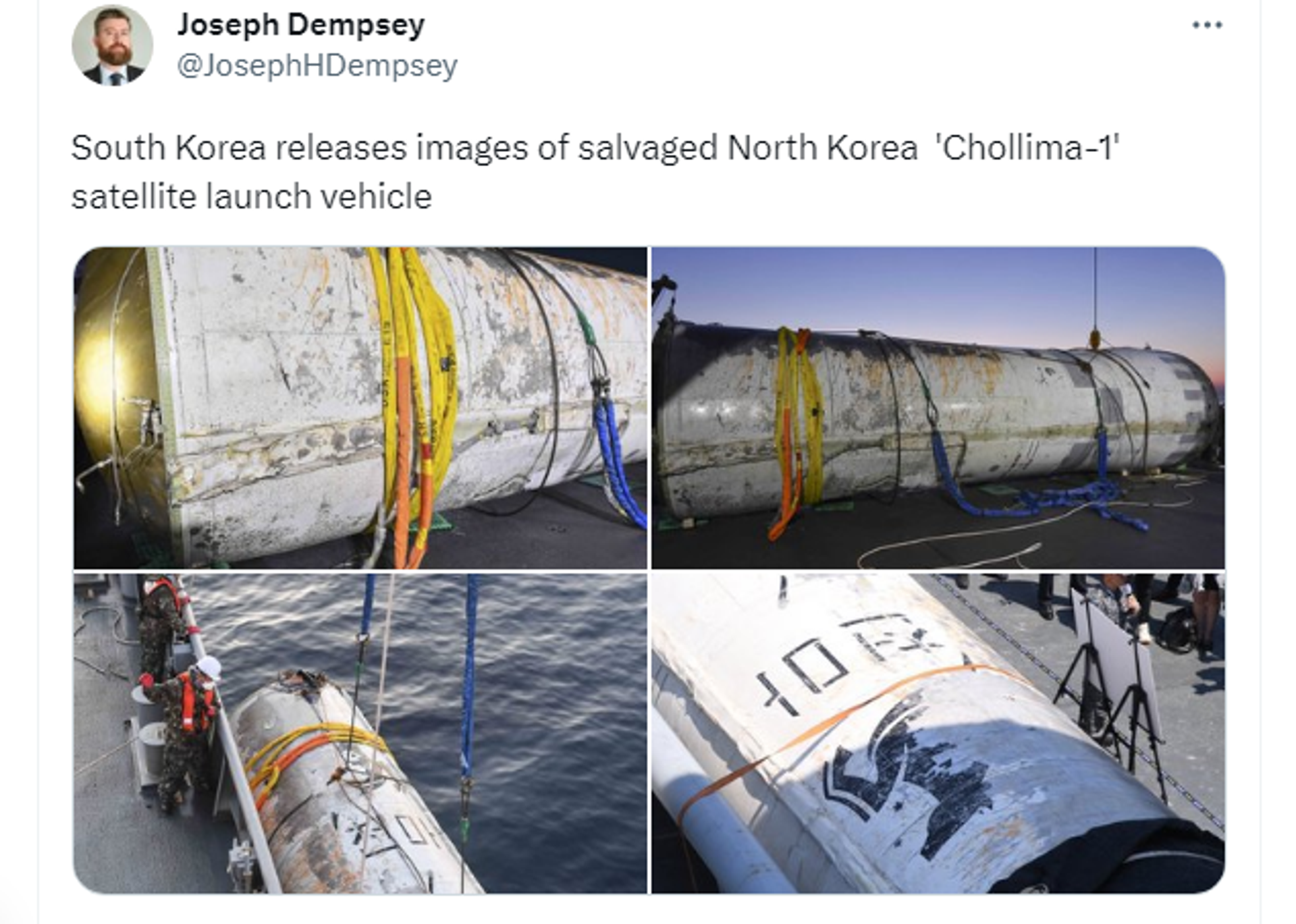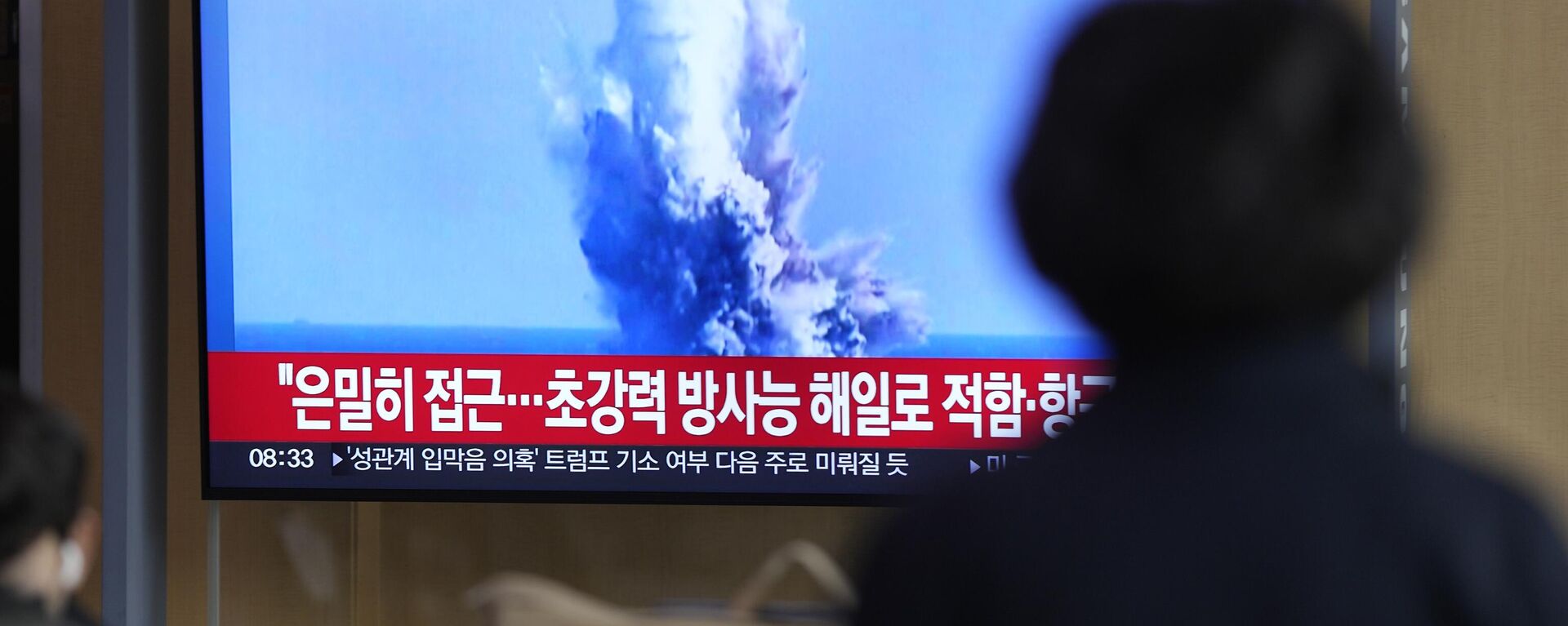N. Korean Satellite Launch Vehicle Parts May Yield ‘Trove’ of Info on Kim's Missiles
06:50 GMT 19.06.2023 (Updated: 13:34 GMT 18.09.2023)

© AP Photo / South Korea Defense Ministry
Subscribe
Late last week, South Korea recovered what it believes to be part of a rocket used by Pyongyang during a failed attempt to launch its first military surveillance satellite on May 31.
Seoul salvaging large sections of a rocket that crashed into the sea while trying to send a North Korean spy satellite to orbit last month may provide “a trove of information” about Pyongyang’s missile program, analysts have told a US news network.
German aerospace engineer Markus Schiller argued that “Anyone with access to that rocket part and a good understanding of rockets should be able to derive all technical data, performance data, and the manufacturing capabilities of the North Koreans from that hardware, including the meaning of proliferation for their whole program.”

A Twitter screenshot of images of what Seoul believes to be a salvaged part of a North Korean satellite launch vehicle
© Photo : Twitter/@JosephHDempsey
London-based military analyst Joseph Dempsey, for his part, said that the salvaged pieces shown by South Korea and images of the rocket provided by Pyongyang reinforce indications of the second stage being recovered.
“The most significant element South Korea could glean from this section is the engine. If recovered, it could indicate the origins of the design, potentially highlighting further sanction violations,” he added.
American expert on nonproliferation David Schmerler suggested that Seoul recovering the rocket sections would help in finding out what materials went into its construction, possibly including foreign parts.
“If they do find parts not made domestically in North Korea, steps can be put into place to prevent the North from acquiring them in the future. It would also help to identify the state of North Korea’s ability to produce parts in country,” the expert claimed.
Former US Central Intelligence Agency (CIA) analyst Soo Kim has, meanwhile, said that the failed satellite launch would not prevent Pyongyang from forging ahead with its missile and satellite program.
“The regime is quite thick-skinned and brazen-faced in the face of its vulnerabilities, so this incident should still leave Kim unfazed and unshaken in his determination to sophisticate his country’s weapons program,” Soo argued.
The remarks come a few days after the South Korean Joint Chiefs of Staff announced that it had recovered what it believes to be the second-stage propellant of the North Korean space launch vehicle Chollima Type 1.
Photos of the purported North Korean rocket remains were released by the South Korean military, which described it as 2.5 meters in diameter and 12 meters long. Preliminary analysis leads South Korean authorities to believe the rocket’s engine, fuel cylinder and oxidizer cylinder may all still be intact.
On May 31, North Korea attempted to launch its first military satellite, which it said would be used to keep an eye on US and South Korean military movements in the area. The launch proved a failure when the rocket’s second stage propellant failed to ignite, with the rocket later falling into the Yellow Sea.
The botched launch followed Pyongyang test-firing 19 ballistic missiles earlier this year, including three ICBMs, and testing a new array of systems to conduct strikes on South Korea and Japan.
Since 2006, North Korea has been under UN Security Council sanctions over developing nuclear weapons and related activities, with the US and other countries slapping unilateral sanctions on Pyongyang. The sanctions, in particular, ban the trade of weapons and military equipment, freeze the assets of people involved in the nuclear program, and restrict scientific cooperation.



